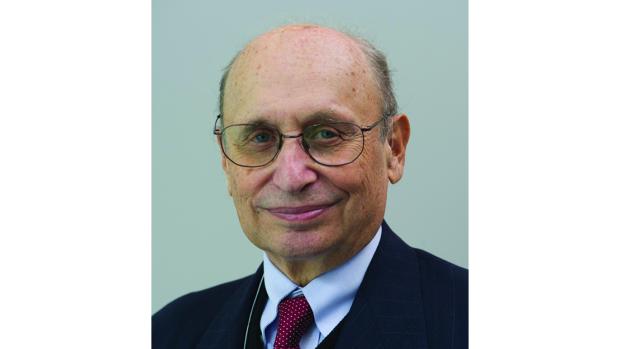In Memoriam: Ivan Frisch

The entire NYU Tandon School of Engineering community mourns the recent passing of Professor Emeritus of Computer Science and Engineering Ivan Frisch.
An NYU Presidential Fellow, as well as a former Executive Vice President and Provost and a one-time Director of the school’s Center for Advanced Technology in Telecommunications (CATT), Frisch was an important figure in Tandon history, as well as in the history of modern telecommunications networks.
Ivan Thomas Frisch was born on September 21, 1937, in Budapest, Hungary. The son of Laszlo and Rose Balog Frisch, he was brought to the U.S. in 1939, as World War II bore down on Europe, and he became a naturalized citizen in 1941.
Like many new immigrants, his family settled in New York, and as a young man, Frisch studied in a joint program between Queens College and Columbia University, earning B.S. degrees in physics and electrical engineering in 1958. He followed that with master’s and doctoral degrees in electrical engineering from Columbia, in 1959 and 1962, respectively.
He then embarked upon a career in academia, traveling to the West Coast to accept a professorship at the University of California, Berkeley, where he remained until 1969 — a year in which he both became a Guggenheim Fellow and helped internet pioneer Howard Frank found the Network Analysis Corporation (NAC); that company won renown for designing the network structure for the ARPAnet. the world's first packet switching network, and NASDAQ, one of the first nationwide computerized financial transaction processing systems. By 1980, with those seminal contributions to its credit, NAC had grown into the nation’s largest telecommunications consulting concern. Frisch stayed on in various high-level capacities after NAC was acquired by Contel.
He retained his love of academia throughout his stint in industry, however, and in 1975 he began teaching computer science at the State University of New York, in Stony Brook. Two years later he joined the faculty of his alma mater, Columbia.
In 1987 he began his long affiliation with what was then known as Polytechnic University, a precursor to NYU Tandon. That year he became the technical director of CATT, whose mission is to create economic impact through research, technology transfer, and faculty entrepreneurship, and he soon ascended to the post of director. From 1992 to 1994 he served as the Provost at Poly, and in 1994 he added the title of Executive Vice President.
Recalling his tenure, Professors Emeritus Henry Bertoni and Robert Boorstyn wrote: “His leadership style was marked by dealing with the challenges facing his group, and support for those under him. Under his leadership, and that of his successors Dick Van Slyke and Shiv Panwar, CATT became the most successful of the various centers established with New York State funding. While part of CATT’s success has been due to the importance of telecommunications, the other part of it is due to the strong industrial participation that Ivan led in building. As Provost, he provided a steady hand in running Poly through uncertain times in its leadership. He was a decent, smart, and kind person who led with ideas and good humor.”
Frisch was admired and respected not just at NYU Tandon — where he also launched an innovative master’s program in Information Systems Engineering and was named a Presidential Fellow — but in every quarter of the telecommunications world. Elected to the National Academy of Engineering, one of the highest honors accorded to engineers in the U.S., which cited his “innovation and implementation of data, voice, and integrated communication networks,” he was also a Fellow of the Institute of Electrical and Electronics Engineers (IEEE). His other laurels included membership in the New York Academy of Sciences, as well as in Phi Beta Kappa, Tau Beta Pi, and Eta Kappa Nu; the Wheeler Award for Achievements in Telecommunications; and the IEEE Eric E. Sumner Award for Outstanding Contributions to Communications Technology.
In addition to authoring one of the earliest books on computer communication systems Communication, Transmission and Transportation Networks, which saw 17 editions published between 1970 and 1978 alone, he has written hundreds of highly cited journal articles and research papers.
His service to the profession included stints as founding Editor in Chief of Networks, published by Wiley; member of the Administrative Committee of the IEEE Circuits and Systems Society; member of the Board of Governors of the IEEE Communications Society; Associate Editor of the IEEE Transactions on Circuit Theory; Features Editor of the IEEE Communications Magazine; and chair of the IEEE Communication Society Workshop on Network Management and Control.
He will be sorely missed by all who had the opportunity to work and study with him and will be long remembered at NYU Tandon for helping make the school a major hub of telecommunications innovation.
Additional tributes:
Ivan brought dynamism and new thinking to everything he took on. He treated everyone well and was an inspiration to all. As a stickler for punctuality, one aspect of academia he never got used to was our loose approach to time, with meetings often getting underway well past their scheduled times!
– Professor of Electrical and Computer Engineering and Director of CATT Shivendra Panwar




